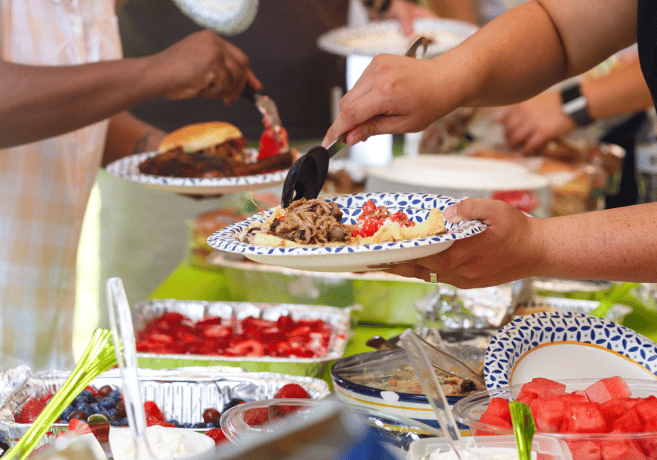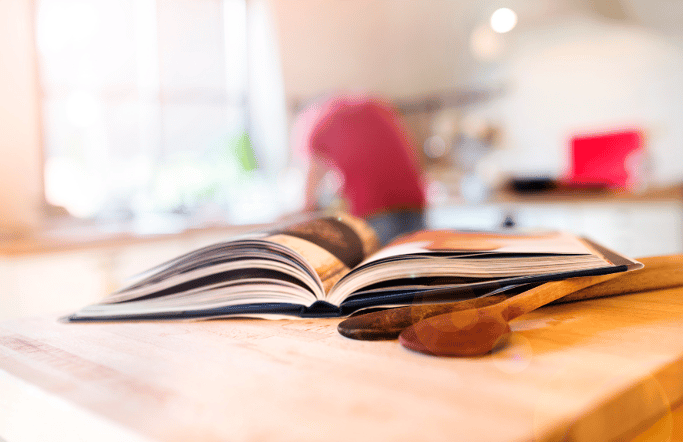Hosting exchange students from around the world offers an opportunity to bridge cultures, build life-long friendships, and create lasting memories. One of the most powerful ways to connect with your exchange student is through the universal language of food. In this blog, we’ll explore the art of sharing culture through cooking, offering some tips and inspiration to the host families out there.
Embrace Diversity in Your Kitchen

When hosting exchange students, it’s essential to create a welcoming environment that celebrates diversity. Start by opening up your kitchen to new ingredients, spices, and cooking techniques from different cultures. Be curious and open to experimenting with recipes you may have never tried before. Explore local international markets to find authentic ingredients, and encourage your exchange student to share their favorite recipes and dishes from their home country.
Cook Together

Cooking together is a wonderful way to bond and learn about each other’s cultures. Invite your exchange student to join you in the kitchen, and reciprocate by expressing interest in their culinary traditions. You could explore cook books together or share recipes online that you want to make! Cooking together allows for a hands-on experience, as you swap stories and techniques, making the entire process more immersive and enjoyable.
Language of Ingredients

As you and your exchange student explore new recipes together, use it as an opportunity to learn and teach the names of ingredients in each other’s languages. You can even label ingredients or parts of the kitchen with what they’re called in a different language to learn a new language together! This linguistic exchange can be a fun and educational way to build language skills and deepen cultural understanding.
Share Family Traditions

Just as you’re eager to learn about your exchange student’s culture, they’re likely curious about yours too. Take the opportunity to introduce them to your family’s traditional recipes. Explain your emotional connection to certain dishes from your childhood and the stories behind them. This exchange of family practices with food can be a meaningful way to share not just your culture, but your values as well.
Explore World Cuisines

To create a well-rounded cultural exchange, explore dishes from various parts of the world. Dedicate themed nights to different cuisines and encourage your exchange student to take the lead in choosing recipes from their home culture. You can try making sushi from Japan, tacos from Mexico, or tagine from Morocco. Exploring world cuisines allows for a more holistic approach to culinary diplomacy.
Host Cultural Food Nights

Consider hosting cultural food nights where you and your exchange student can collaborate to prepare a feast from their home country. Invite friends and family over to share in the experience. Enhance the dining ambiance by decorating your dining area to reflect the culture of cuisine you’re preparing, such as with tablecloths, centerpieces, or decorations. These events can serve as a mini-cultural exchange, fostering an atmosphere of inclusivity and celebration.
Explore Seasonal and Festive Dishes

Take advantage of seasonal ingredients and festive occasions to explore special dishes from your exchange student’s culture. For example, if your exchange student is from India, learn to prepare traditional Diwali sweets during the festival of lights. Seasonal and festive dishes often have deep cultural significance and can provide a window into the traditions and values of your exchange student’s home country.
Collaborate on Fusion Creations

Get creative by collaborating on fusion dishes that combine elements from both your cultural backgrounds. This approach can lead to exciting and unique flavor combinations, sparking conversations about the blending of cultures and traditions. Experimenting with fusion cooking also encourages flexibility and adaptability in the kitchen, as you explore new ways to incorporate diverse ingredients and techniques.
Plan Field Trips

To further enrich the cultural exchange, plan field trips to local ethnic restaurants, cultural festivals, or even cooking classes hosted by chefs from various countries. Pro tip: check out an Ethiopian restaurant near you– fun, delicious, and vegetarian-friendly! These experiences out of the house can provide valuable exposure to not just authentic flavors but immersion into the cultural environment that surrounds the cuisine.
Document Your Culinary Adventures

Keep a journal or create a photo album (can be a shared digital album!) to document your culinary adventures with your exchange student. Capture the moments in the kitchen, the finished dishes, and the smiles all around.
Sharing culture through cooking with your exchange students is a special way to foster understanding, build connections, and create lasting memories. By embracing diversity in your kitchen, cooking together, and exploring world cuisines, you can make your home a hub of cultural exchange and create a unique and meaningful experience for everyone involved.
So, open your kitchen doors, get ready to explore the world through food, and savor the delightful tastes of cultural diplomacy.
Do you have any other tips on sharing culture through food? Comment below and bon appétit!


